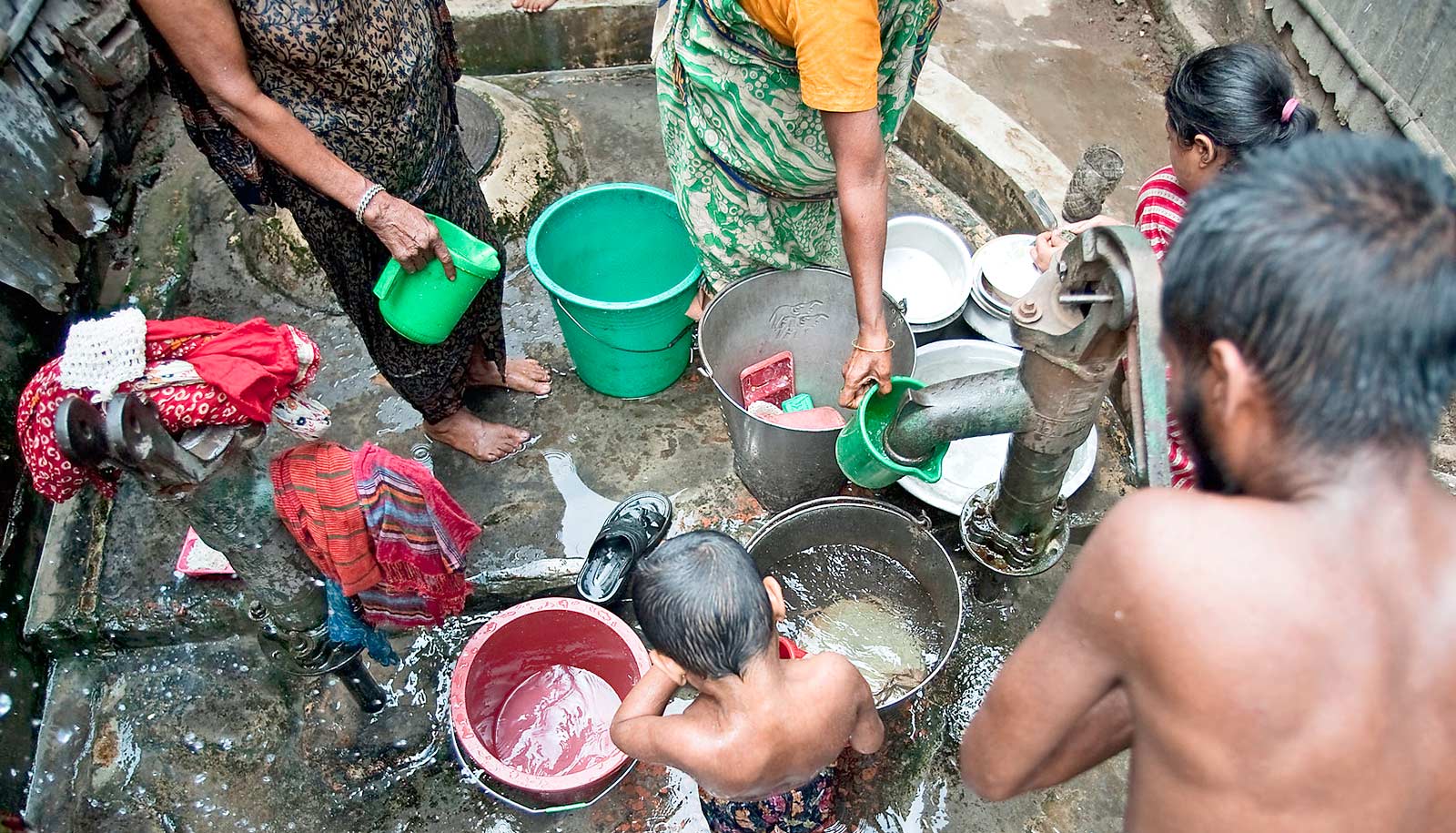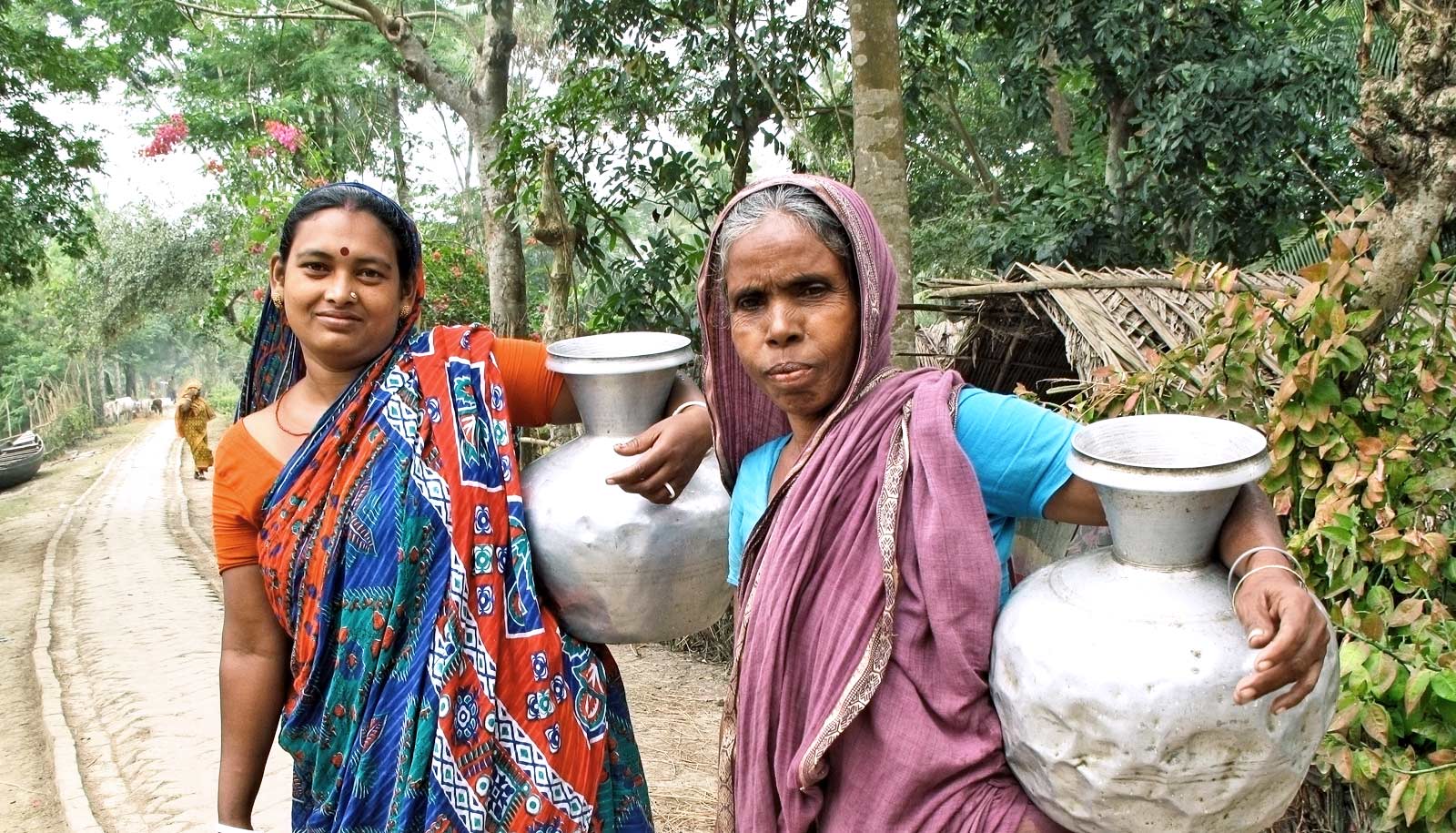Installing an automatic chlorine dispenser at shared community water points reduces rates of diarrhea in children, a new study in Bangladesh shows.
Diarrhea kills a child under the age of five every minute on average. Diarrheal disease, the second leading cause of death for children globally, could become even more difficult to control as poor urban areas with limited clean water access expand.
Researchers call the new dispenser, described in The Lancet Global Health, an improvement over other purification strategies.
In developing countries, few cities are able to maintain fully pressurized water systems that consistently pump water around the clock. Even if it is safe at the source, water in these systems is at risk of becoming contaminated while sitting in pipes. About 1 billion people who access water via piped systems receive water that does not meet international standards for safety.
“Group-level water treatment among people who share a water supply removes the individual burden on households to treat their own water,” says senior author Stephen Luby, a professor of medicine in the infectious diseases and geographic medicine division at Stanford University School of Medicine. “So, it offers the prospect for extending safe drinking water to vulnerable slum residents globally.”
Chlorine dispensers at community pumps
Chlorination is one of the cheapest and most widely available ways of disinfecting water, but the chemical’s taste and odor are significant barriers for many people, researchers say. Also, developers intended most available water treatment devices for home use, generally after collection at a community tap, so they usually require a change in behavior. These barriers prevented many people from getting safe water.
“The study demonstrated that this simple, electricity-independent technology could be transformative in scaling up water treatment in slums and reducing child diarrhea, without requiring people to do anything differently when they collect their drinking water,” says lead author Amy Pickering, an assistant professor of civil and environmental engineering at Tufts University who received her PhD at Stanford, where she also worked as a postdoctoral scholar.
Working in two poor communities of Dhaka, Bangladesh, the researchers tested a way of treating water, called Aquatabs Flo, that works at community pumps rather than in the home. It requires no electricity and automatically doses a precise amount of chlorine into water as it flows through the device. The chlorine lasts long enough to protect water stored in containers against recontamination.
To avoid bad-tasting water, the researchers polled Dhaka residents to find out how much chlorine could remain in the water without being objectionable. Then, they set the chlorine dosers to deliver low levels of chlorine the first few months so people would get used to the taste.
Later, they upped that amount to a level that purified the water effectively but remained acceptable taste-wise. The treated water was more than four times less likely to contain E. coli., a bacterium that indicates sewage contamination.
E. coli in urban water
The researchers tested the device by having it deliver chlorine in some communities and Vitamin C in others. Out of 1,000 children, the ones who received the chlorinated water had 23% lower rates of diarrhea.
While the result may seem obvious, previous studies were ambiguous either because people didn’t consistently use the household chlorination systems being tested or because the studies weren’t able to compare to communities without water treatment.
The device was particularly effective in children living in an urban setting, which the researchers suggest could relate to a few different causes. One is that water in urban settings often spends more time in unpressurized pipes. Also, before the chlorine treatment, E. coli contaminated nearly 90% of taps in that setting, almost twice the rate of the more rural study area. Finally, the two locations contained different pathogens, some of which could resist chlorine.
Either way, the results suggest that a device that delivers a precise low dose of chlorine can purify water while tasting good enough to drink.
Although Aquatabs Flo is currently only compatible with water points connected to storage tanks, Tufts and Stanford researchers are collaborating with an industry partner to commercialize a chlorine doser compatible with any tap.
Additional coauthors are from the University of California, Berkeley; Emory University; and the International Centre for Diarrhoeal Diseases Research, Bangladesh. The World Bank funded the work.
Source: Stanford University



